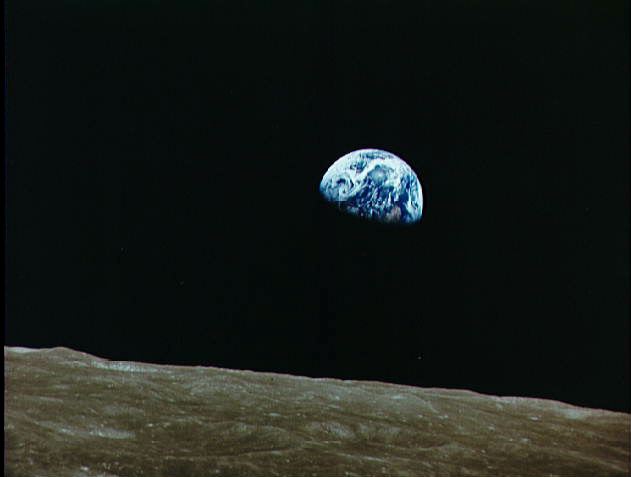Habitable conditions on Earth will be possible for at least another 1.75 billion years, according to astrobiologists at the University of East Anglia.
Findings published today (September 19) in the journal Astrobiology reveal the habitable lifetime of planet Earth – based on our distance from the sun and temperatures at which it is possible for the planet to have liquid water.
The research team looked to the stars for inspiration. Using recently discovered planets outside our solar system (exoplanets) as examples, they investigated the potential for these planets to host life.

Earth seen from moon via Apollo 8 astronauts in 1968
The research was led by Andrew Rushby, from UEA’s school of Environmental Sciences. He said: “We used the ‘habitable zone’ concept to make these estimates – this is the distance from a planet’s star at which temperatures are conducive to having liquid water on the surface.”
“We used stellar evolution models to estimate the end of a planet’s habitable lifetime by determining when it will no longer be in the habitable zone. We estimate that Earth will cease to be habitable somewhere between 1.75 and 3.25 billion years from now. After this point, Earth will be in the ‘hot zone’ of the sun, with temperatures so high that the seas would evaporate. We would see a catastrophic and terminal extinction event for all life.
“Of course conditions for humans and other complex life will become impossible much sooner – and this is being accelerated by anthropogenic climate change. Humans would be in trouble with even a small increase in temperature, and near the end only microbes in niche environments would be able to endure the heat.
“Looking back a similar amount of time, we know that there was cellular life on earth. We had insects 400 million years ago, dinosaurs 300 million years ago and flowering plants 130 million years ago. Anatomically modern humans have only been around for the last 200,000 years – so you can see it takes a really long time for intelligent life to develop.
“The amount of habitable time on a planet is very important because it tells us about the potential for the evolution of complex life – which is likely to require a longer period of habitable conditions.
“Looking at habitability metrics is useful because it allows us to investigate the potential for other planets to host life, and understand the stage that life may be at elsewhere in the galaxy.
“Of course, much of evolution is down to luck, so this isn’t concrete, but we know that complex, intelligent species like humans could not emerge after only a few million years because it took us 75 per cent of the entire habitable lifetime of this planet to evolve. We think it will probably be a similar story elsewhere.”
Almost 1,000 planets outside our solar system have been identified by astronomers. The research team looked at some of these as examples, and studied the evolving nature of planetary habitability over astronomical and geological time.
“Interestingly, not many other predictions based on the habitable zone alone were available, which is why we decided to work on a method for this. Other scientists have used complex models to make estimates for the Earth alone, but these are not suitable for applying to other planets.
“We compared Earth to eight planets which are currently in their habitable phase, including Mars. We found that planets orbiting smaller mass stars tend to have longer habitable zone lifetimes.
“One of the planets that we applied our model to is Kepler 22b, which has a habitable lifetime of 4.3 to 6.1 billion years. Even more surprising is Gliese 581d which has a massive habitable lifetime of between 42.4 to 54.7 billion years. This planet may be warm and pleasant for 10 times the entire time that our solar system has existed!
“To date, no true Earth analogue planet has been detected. But it is possible that there will be a habitable, Earth-like planet within 10 light-years, which is very close in astronomical terms. However reaching it would take hundreds of thousands of years with our current technology.
“If we ever needed to move to another planet, Mars is probably our best bet. It’s very close and will remain in the habitable zone until the end of the Sun’s lifetime – six billion years from now.”
‘Habitable Zone Lifetimes of Exoplanets around Main Sequence Stars’ by Andrew Rushby, Mark Claire, Hugh Osborne and Andrew Watson is published in the journal Astrobiology on Thursday, September 19, 2013.
Via EarthSky Science News, Sep 19, 2013



